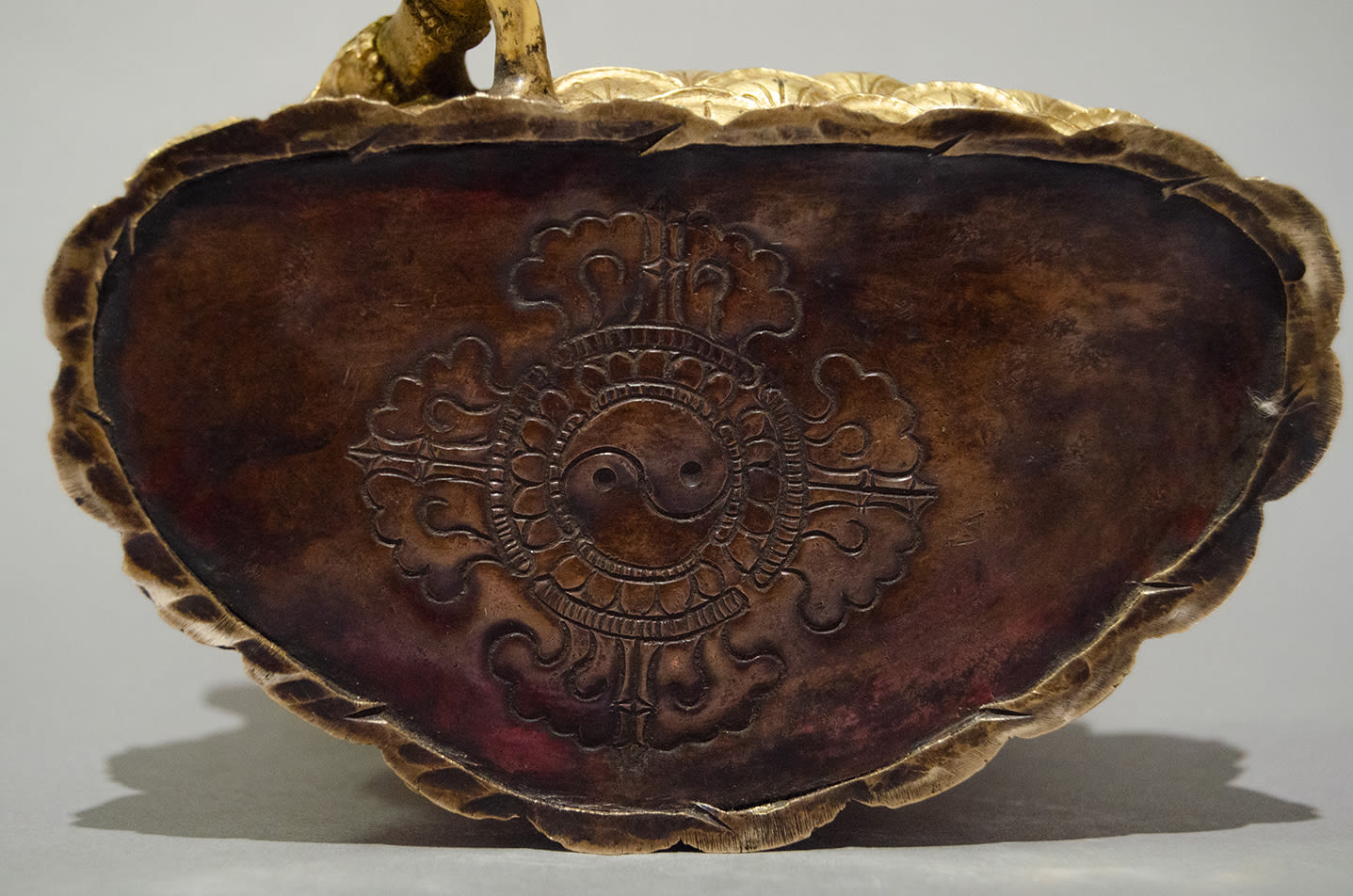Gilt-Bronze Tara Bodhisattva, 18th Century CE - 19th Century CE
Further images
This is an ornate gilt-bronze statuette of the Tara bodhisattva: the “mother of liberation” and a representation of longevity, wisdom, and success through hard work. She can be immediately identified...
This is an ornate gilt-bronze statuette of the Tara bodhisattva: the “mother of liberation” and a representation of longevity, wisdom, and success through hard work. She can be immediately identified as a Tara deity by her flanking lotus – seen pre-blossom during the day and in blossom at night, as the lotus’ fragrance is only released by the appearance of the moon. This blossom cycle affirms the Tara deity’s association with the sun and the moon. This particular bodhisattva is shown with an elaborate beaded arrangement in her hair, heavy earrings that symbolize her eternal status on earth (in contrast to the Buddha’s removal of the earrings that symbolize his renouncement of the physical world), a flowing drape of surplice that adds an ethereal quality to the statuette, and intricate jewelry adornments all over from wrist to ankle. Discernibly absent, however, are the jewels that would have once filled the empty slots in the sumptuous jewelry. Due to the lack of depth of the cavities in the bronze, though, we can assume that the jewels were never inlaid, rather than removed or stolen at a later date. The bodhisattva is composed and calm, her tall top-knot suggesting a superlative wisdom that carries through into her knowing face. She extends her right hand downwards in Varada mudra – a gesture of charity symbolizing the fulfilment of wishes – and rests on the other hand on the lotus heart base to stabilize her Lalita asana. Magnus Allan







